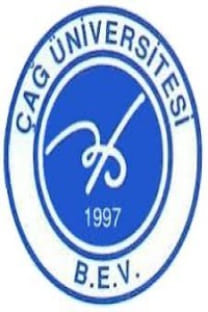An Analysis of the Dollar/Euro Exchange Rate within the Framework of the Optimum Currency Area Theory and the European Union
Euro’nun 1 Ocak, 1999’da tedavüle girmesi yüksek oneme haiz bir ekonomik gelişme olmuş ve Dolar/Euro döviz kurundaki dalgalanmalar büyük ilgi konusu olmuştur. Bu çalışma Euro ve Dolar rekabetçi para rejimlerininin retrospektif bir analizinini sunarak konuyu AB genişleme sureci ve Optimal Para Alanı Teorisi çercevesinde incelemektedir
Anahtar Kelimeler:
AB, Dolar/Euro döviz kuru, Optimal Para Alanı Teorisi
The launch of the Euro on January 1, 1999 has been a highly significant economic event and the fluctuations of the Dollar/Euro exchange rate have become a subject of great concern. This study presents a retrospective analysis of the EuroDollar competitive currency regimes and relates it to the concepts of the EU Enlargement Process and theTheory of Optimum Currency Area
Keywords:
EU, Dollar/Euro exchange rate, optimum currency area theory,
___
Baldwin, R. and Wyplosz, C. (2004), “The Economics of European Integration”, New York: McGraw Hill, 2004.Blanchard, O. (2003) Macroeconomics 3rd edition, Prentice Hall
Cuaresma J. C. and Wójcik C. (2006), “Measuring monetary independence: Evidence from a group of new EU member countries”, Journal of Comparative Economics, 34, 24–43
De Grauwe, P. (1997), “The Economics of Monetary Integration”, Oxford University Press, pp 228.
Dutta. M ( 2000), “Seminar on the EU and the Euro Revolution: The Theory of Optimum Currency Area Revisited” George Washington University, Washington, DC
________(2001) “Seminar on “The EU and the Euro Revolution: The Theory of Optimum Currency Area Revisited” University of Colorado, Boulder. CO.
________ (2002) “The EU and the Euro Revolution: The Theory of Optimum Currency Area Revisited” - an Invited Lecture at The Bologna Center of the Johns Hopkins University – The Paul H. Nitze School of Advanced International Studies,
Gerber, J. (2005) “International Economics” 3rd Edition Pearson Addison Wesley
(Hubbard, R. G. 2005) Money the Financial System and the Economy 5th ed Pearson Addsion Wesley
Issing, O. (1999) “The Euro area economy on its way to the new millennium” in Deutsche Bundesbank, 31, 7-13, May 10.
Mann, Catherine L. (2004). “The US Current Account, New Economy Services, and Implications for Sustainability”. Review of International Economics 12 (2), 262–276.
Mishkin, F. S. (2006) The Economics of Money, Banking and Financial Markets. 7th Ed. Pearsion Addison Wesley
Mishkin, F. S. and Eakin, S. G. (2006) Financial Markets and Institutions 5th ed pearson Addision Wwesley
Mundell, R. (1961) A Theory of Optimum Currency Area” American Economic Review, 51(4), 657-665.
NUTI, D. M. (2000). “The Costs and Benefits of Euro-isation in Central- Eastern Europe Before or Instead of EMU Membership”. William Davidson Institute Working Paper, no. 340, October.
Obstfeld, M. (1999). “International Currency Experience: New Lessons and Lesson Relearned” Brookings Paper on Economic Activity No.1, 119-220.
Rogoff, K. (2005). “The Euro at five: Short-run pain, long-run gain?”, Journal of Policy Modeling, 27, 441–443.
Salvatore, D. (2005). “The Euro–Dollar exchange rate defies prediction”, Journal of Policy Modeling, 27, 455–464.
Sawyer, C. W. and Sprinkle, R. L (2006) International Economics, 2nd Edition, Pearson Addison Wesley Temperton, P. (1998) The Euro, UK, John Wiley & Sons
- ISSN: 1304-8392
- Yayın Aralığı: Yılda 2 Sayı
- Başlangıç: 2004
- Yayıncı: Çağ Üniversitesi
Sayıdaki Diğer Makaleler
FİNANSAL YENİLİKLER; ORTAYA ÇIKIŞ NEDENLERİ VE TÜRLERİ
H Çetin BEDESTENCİ, Özlem YARDIM
NOMİNAL BİR ÇIPANIN ROLÜ VE TÜRKİYE’NİN ENFLASYON HEDEFLEMESİNE GEÇİŞ SÜRECİ
FİNANSAL YENİLİKLER; ORTAYA ÇIKIŞ NEDENLERİ VE TÜRLERİ
H Çetin BEDESTENCİ, Özlem YARDIM
NOMİNAL BİR ÇIPANIN ROLÜ VE TÜRKİYE’NİN ENFLASYON HEDEFLEMESİNE GEÇİŞ SÜRECİ
Management of Engendered Political System of Pakistan: Post 9/11
